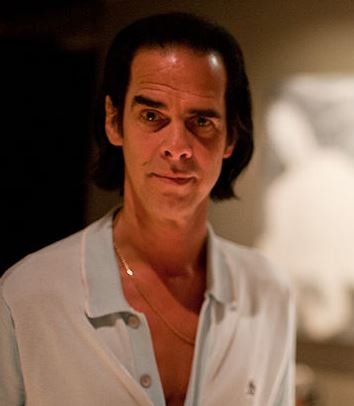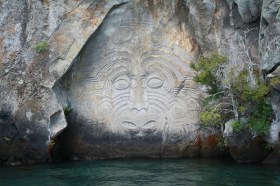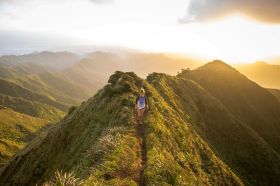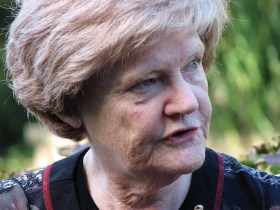In December 2022, not yet it’s difficult (NYID) announced the appointment of a yet-to-be-created avatar to succeed me as Artistic Director and take over the administrative reins of the company by 2025 with an ambition to create a space for me to operate solely as an artist.
From the get-go, NYID has been both an artistic practice and an arts company, so it’s a natural evolution for it to morph into an artistic project. In the spirit of conceptual practice, we have publicly announced our intention without the wherewithal to make it happen. That is the way of art. To enter a space of not-knowing and build knowledge through experiment and risk, trial and error; the only logic is the one we create as we make.
We see 2025 AD as an opportunity to create co-agentic art with artificial intelligence (AI) and, by so doing, interrogate the evolving Web3 encompassing the provenance potential of blockchain and the challenge to Capital via new iterations such as digital autonomous organisations. A key industrial reason for this research is to relieve the artist of the overwhelming administrative burden that accounts for much of their time. We’re working with our new collaborator, cultural actor, Reggie Ba-Pe, and looking for support to research and test the ideas and the mechanisms side-by-side.
It feels like every day an avalanche of opinion falls in the media about new AI interfaces. The growing discourse is a very complex, emerging critical space covering a lot of new ground from the financial to the philosophical and moving at an exponential rate.
There are legitimate concerns in educational, business and broader social contexts. The issue of job displacement, in particular, is at the forefront of people’s minds. But if the sky is falling, it’s falling in locations where work has for decades been reduced to an industrial algorithm that makes it easier for an AI to replicate, representing a marker along an information highway built with automation in mind. Clear divisions are emerging. In the cultural sector, for example, illustrators, technical writers, some news journalism and even editorial, may be on notice, whereas opinion and investigative journalism seem more resistant, at least today.
It’s helpful to understand that interaction with AI is osmotic, its agency and function acts upon, and is acted upon, by humans. Its value is determined by this ‘co-agency’. How we perceive AI determines its function as much as its algorithm. In a recent article, an art critic subjected their work to Chat-GPT, which produced a response the critic felt threatened their job, an interaction that likely says more about the critic’s capacity than the AI’s. Of serious concern, artists’ work has been vacuumed up without their consent for image-making AI such as Midjourney and Stable Diffusion to service their commercial exploitation.
It’s clear the new AI interfaces have numerous implications for cultural production. Interestingly, the discourse around the proliferation of image-generating AI has exposed the real problem of conflating artistic and creative practice, which, despite our neoliberal policy paradigms advocating the contrary, are not one and the same. In Australia’s policy frameworks, ‘creative practice’ has become a catch-all phrase that has displaced or replaced ‘artistic practice’. And this has caused some confusion when addressing the issue of the creation of artworks in the evolving AI space.
So how are they different? And why is one more susceptible to the machinations of the machine? While AI may be able to replicate some creative work, art is less susceptible. If we look through the rubric of process-and-product, then AI is not such a threat to artistic practice.
A creative practice makes a product. Its success is determined by its currency, that is, whether the product is bought and sold. Art is a process of inquiry, along the way artefacts may be created as evidence of its progress – image, sound, object, performance etc – but their consumption does not determine success nor is output a singular aim.
Read: ChatGPT AI generated art critic
Creative practice is about parameters, establishing a logic and restating it in order to exploit its commercial potential. In this way a TV series, interior design, a video game may be created. Artistic practice sits at the edge of those parameters, questioning their logic, validity and appropriateness. Artistic practice requires the artist to ask every day: are those parameters even real? Using the analogy of grammar, creative practice builds towards the end of every sentence committed to providing an answer (for consumption), whereas artistic practice is ever interested in developing better questions (for contemplation).
This is why art is subversive, unsettling and dangerous (and why artists are often hungry). Products sell. Process doesn’t. AI can replicate products, but it cannot replace the space of not-knowing.
Making art is an alchemical process that resists concretisation (and commodification); it requires chaos, irrationality, disorder and incompleteness, not the order of the market. Art is hard to contain, process and control. As soon as you think you have a handle on it, it morphs into something else. I’m reminded of Ben Eltham’s assertion that art’s ‘funding architecture and philosophy is not supportable by mainstream economic theory’; it sits in the column of ‘public good’. Which can still be sold, sure. It’s just that what is being bought is not solely an object, a thing or a performance, but an individual process, of wrestling with an idea, making something other than what one thought one was making, being disarmed by discovery and surprise, by fully inhabiting the space of not-knowing. One buys the whole narrative. Current AI does not have this capacity, and may never have, because at the heart of artistic process is the lived experience of the human condition in all its unpredictability and dynamism, and AI is not (yet) human.
Over the summer, I’ve spoken to many artists about their work and their practices in the shadow of the AI explosion. There is real apprehension about the non-consensual use of their work, their IP, which simply extends the shadow of precarity governing their daily lives; this is a serious governance issue. However, most don’t feel particularly threatened by the AI tools; some are embracing them, others still remain curious or watchfully wary. Many share the view about the limits of AI’s capacity.

In January, the most excellent Nick Cave wrote in The Red Hand Files a response to a fan who had asked ‘ChatGPT to write a song in the style of Nick Cave’ and sent it to him for an opinion. Nick’s gentle, brilliant and articulate response needs to be read in full, but I reference here those words most pertinent to this argument:
‘Writing a good song is … an act of self-murder that destroys all one has strived to produce in the past. It is those dangerous, heart-stopping departures that catapult the artist beyond the limits of what he or she recognises as their known self… It is the breathless confrontation with one’s vulnerability, one’s perilousness, one’s smallness, pitted against a sense of sudden shocking discovery; it is the redemptive artistic act that stirs the heart of the listener, where the listener recognises in the inner workings of the song their own blood, their own struggle, their own suffering. This is what we humble humans can offer, that AI can only mimic, the transcendent journey of the artist that forever grapples with his or her own shortcomings.’
Nick Cave deals with any misconception that art (the song) is a product while inhabiting artistic process in the form of a short literary artwork, demonstrating at one and the same time the breadth of the human experience and the limits of AI. It’s both a beautiful piece of writing and an antidote for anxiety.
As the generative AI space explodes over the next while within the emerging context of Web3, positions mapped out here will be challenged. In embarking on this adventure over the next few years, we at NYID hope to navigate this complex space and its intersection with artistic and cultural production, post-work, human-machine ethics and philosophy. At the very least, I’m curious to know how I will feel about a company I co-founded being run by an avatar.





